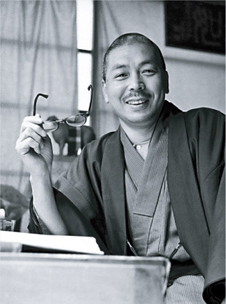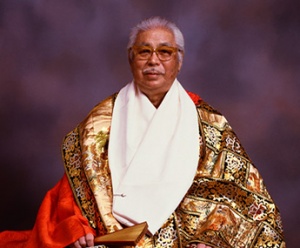Buddhist Association of Shinnyo-En
| Buddhist Association of Shinnyo-En | |
|---|---|
Shinnyo-en Logo | |
| Information | |
| Tradition/Linage | Japanese Esoteric Buddhism |
| Main School | Mahayana |
| Sub School | Japanese |
| People | |
| Founder(s) | BUORG-Names::Names::Master Shinjo Ito |
| Contact Infotmation | |
| Address | 231 Longueville Road Lane Cove New South Wales 2066 Australia |
| Country | Australia |
| Coordinates | service=google }} {{#geocode:231Longueville RoadLane CoveNew South WalesAustralia|format=float|service=google}} service=google }}The "_geo" type of this property is invalid |
| Map | {{#display_map:{{#geocode:231Longueville RoadLane CoveNew South WalesAustralia}}|height=250px|width=250px|zoom=18}} |
| Phone | Phone::(02) 9418 6688 |
| Website | Website::https://www.shinnyo.org.au/ "Website" has not been listed as valid URI scheme. |
| Email::shinnyoenaustralia@gmail.comURIs of the form "Email::shinnyoenaustralia@gmail.com" are not allowed. | |
The Beliefs and Practices of Shinnyo Buddhism
Shinnyo-en is an international Buddhist community founded on the ancient wisdom and love embodied in the Buddha's teachings. Building on twenty-five centuries of tradition, Shinnyo Buddhism teaches laypeople how to use each day as an opportunity to connect with others and seek enlightenment.
The Buddhist term shinnyo denotes both buddhahood (spiritual awakening) and the nature of reality; en refers to a boundless garden or open space. Shinnyo-en is a place for people to discover and develop the buddha, or awakened nature, within themselves through altruistic Buddhist practice.
Shinnyo Buddhists promote the values of peaceful coexistence and cooperation through the works of philanthropic foundations, and place great value on the contributions that each individual can make toward life on our planet. Everyone's spiritual journey is unique, and Shinnyo-en offers a diverse environment where we can all grow and cultivate their aspiration for enlightenment.
Shinnyo-en History
c. 563 BCE
Siddhartha Gautama, the man who is to become a buddha (awakened one), is born at Lumbini in present-day Nepal. At age 35 Siddhartha attains enlightenment (a state of spiritual awakening motivated by the desire to alleviate people's suffering) at Bodhgaya and becomes known as the Buddha Shakyamuni. Shortly after his enlightenment, Shakyamuni delivers his first teaching at Sarnath and passes on his realizations to others.
c. 483 BCE
Shakyamuni Buddha passes away in Kushinagara at the age of 80 after teaching for 45 years. For the next several centuries, Buddhism spreads and adapts to different beliefs and cultures. One such branch is Esoteric Buddhism (focusing on experiential spirituality), which was developed in India by masters such as Nagarjuna in the first centuries of the common era.
806
Kobo Daishi (also known as Kukai) returns to Japan from China as a master of Esoteric Buddhism.
874
Master Shobo (a student of Kobo Daishi's Buddhism), founds Daigoji monastery, where Shinjo Ito would study over a thousand years later.
1936
Shinjo begins his training at Daigoji and starts a fellowship of Buddhist practitioners that grew to become Shinnyo-en.
1938
Shinnyo-en celebrates the consecration of its first temple, Shinchoji.
1943
Shinjo completes Buddhist training and is recognized as an acharya, which authorizes him to take on students and establish his own dharma lineage.
1950
Tomoji Ito completes her Buddhist training.
1966
Shinjo and his wife Tomoji attend a world conference of Buddhists in Thailand. During this trip they go on to visit India, the birthplace of Buddhism.
1967
Shinjo and Tomoji visit Europe and the Middle East as representatives of Japanese Buddhism for a religious and cultural exchange of goodwill. Shortly after their return, Tomoji Ito passes away.
1970
Shinjo and his daughter and future successor, Shinso, embark on their first trip to the United States to cultivate Shinnyo-en's budding overseas presence.
1971
The first sanctuary outside Japan is dedicated in Hawaii.
1982
Shinso Ito completes her Buddhist training and becomes a successor in the Shinnyo lineage. The first sanctuary in the continental U.S. is dedicated in San Francisco.
1985
The first Asian sanctuary outside Japan is dedicated in Taipei, Taiwan, and the first sanctuary in Europe is dedicated in Paris.
1989
Shinso becomes the head of Shinnyo-en after Shinjo's passing.
1997
The Shinnyo Samaya Hall is dedicated at Daigoji in recognition of Shinjo's founding of a new school of Buddhism. Shinso becomes the first woman to officiate at a service in the 1,100-year history of Daigoji.
2006
Commemorating the centennial of Shinjo's birth, the new training center of Ogen'in opens to facilitate greater access to Shinnyo Buddhism.
2011
After several years of renovations of the temple complex, the Maraparinirvana Buddha statue, sculpted by the Shinnyo-en Founder, Shinjo Ito, was re-inspirited at the Oyasono headquarters temple in Tachikawa, Japan.
Today
Shinnyo Buddhism continues to spread as new temples are opened and the teachings reach the hearts of many around the world. Currently, Oyasono, the head temple of Shinnyo Buddhism, is undergoing restoration and renovation for the sake of future Shinnyo Buddhists.
Master Shinjo Ito
Shinnyo-en's story began in 1936. Shinjo Ito was enjoying a comfortable career as an aircraft engineer, but felt a strong desire to pursue Buddhism and guide people to happiness. With the support of his wife Tomoji, Shinjo began training in Shingon, a major school of Japanese Buddhism founded in the 9th century CE, at the Daigoji temple complex in Kyoto. According to the mystical teachings of Shingon, enlightenment is not a distant reality that can take countless lifetimes to attain. Rather, it is a part of the reality we live in. With the guidance of a genuine teacher, enlightenment can be realized through practice for the benefit of oneself and others.
Shinjo studied sacred Buddhist texts (known as sutras), searching for one that would capture Shingon's mystical truths yet also make Shingon Buddhism accessible to laypeople. Shinjo concluded that the Nirvana Sutra—which focuses on the teachings of the Buddha in the final moments of his life—was the perfect text to help people understand the Buddha's teachings. The Nirvana Sutra brings together the teachings bequeathed by the Buddha on his final day; it is the Buddha's legacy and the culmination of forty-five years of teaching. The Buddha emphasizes in his final discourse that everyone can attain enlightenment, and welcomes all to the path of cultivating the four virtues of lovingkindness, compassion, joy, and equanimity.
Shinjo often repeated the saying: "One person's awakening will enlighten countless others." This articulates the Buddhist principle of interdependence and the underlying altruistic philosophy, central to Shinnyo Buddhism, that true spiritual practice brings joy to oneself and others. Shinjo believed that each of us possesses the potential for spiritual awakening, and directed his energy to helping people cultivate that potential.
Shinnyo-en in Australia
Shinnyo-en Australia is a lay Buddhist community serving the needs of Shinnyo-en members and their communities throughout Australia and New Zealand. Shinnyo-en is a worldwide community that offers people a pathway to finding true joy in this life that is applicable to a modern lifestyle yet with a strong foundation of traditional Buddha.







